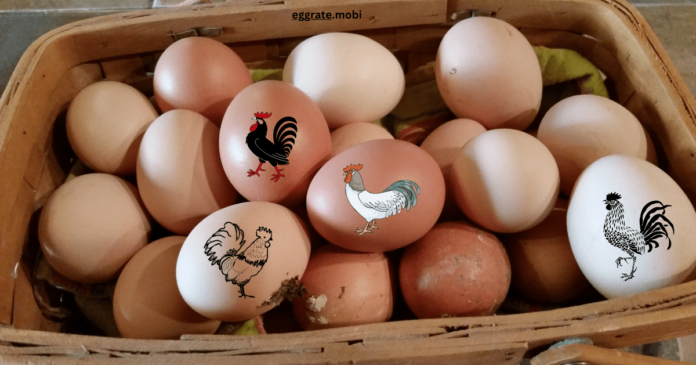Eggs are a staple food consumed by millions of people worldwide. Whether you’re a breakfast enthusiast or a baking enthusiast eggs play a crucial role in various culinary preparations.
However, like any agricultural commodity, egg prices can vary from day to day. In this article we will explore the factors that influence the fluctuation of egg rates and provide insights into understanding the dynamics behind the ever-changing egg rate
Factors Influencing Egg Prices
1. Demand and Supply
The most significant factor influencing egg prices is the balance between demand and supply. When the demand for eggs increases, such as during festive seasons or holidays, prices tend to rise. Conversely, when the supply exceeds demand, prices may decrease.
2. Feed Costs
The cost of chicken feed is another crucial determinant of egg prices. Since feed constitutes a significant portion of poultry production expenses, fluctuations in feed costs can directly impact egg rates. If the price of feed ingredients like corn or soybean rises, producers may pass on the additional costs to consumers, resulting in higher egg prices.
3. Seasonal Variations
Seasonal variations also play a role in egg prices. During certain times of the year, such as winter or spring, egg production may decline due to factors like colder weather or mating patterns of hens. These production challenges can lead to reduced supply, causing egg prices to increase.
4. Market Competition
Market competition between different egg producers and retailers can affect pricing. Local brands may offer eggs at lower prices compared to national brands, as they have fewer distribution costs. Additionally, retailers may adopt pricing strategies to attract customers, leading to variations in egg rates.
5. Government Policies
Government regulations and policies can significantly impact egg prices. Quality standards, food safety regulations, and trade agreements can influence production costs, imports, and exports. Changes in these policies may have a cascading effect on the overall supply chain, ultimately influencing egg rates.
Understanding the Demand and Supply Dynamics
Consumer preferences and demand patterns play a crucial role in determining egg prices. Factors such as population growth, dietary trends, and cultural practices can influence the demand for eggs. Poultry industry production levels, including the number of laying hens and their productivity, directly affect the supply side of the equation. Furthermore, imports and exports of eggs and egg products can impact domestic egg rates, depending on international trade dynamics.
Impact of Feed Costs on Egg Rates
Feed costs constitute a substantial portion of poultry production expenses. The price of chicken feed depends on factors like grain prices, availability of feed ingredients, and transportation costs. Fluctuations in these elements can directly affect egg prices. For instance, if the price of corn or soybeans rises due to poor harvests or increased demand, poultry farmers may face higher input costs, leading to an increase in egg rates.
Seasonal Variations and Egg Prices
Egg prices often experience seasonal variations due to changes in production and demand patterns. During holidays and festive seasons, the demand for eggs tends to rise as consumers use them for baking, cooking, and celebrations. In contrast, production challenges like colder weather or natural mating patterns of hens can reduce the supply, resulting in increased egg prices.
Market Competition and Egg Prices
The competitive landscape within the egg industry can influence pricing strategies. Local egg producers often have lower distribution costs compared to national brands, enabling them to offer eggs at competitive prices. Retailers also play a significant role in determining egg rates, as they may adopt pricing strategies to attract customers or promote certain brands or qualities of eggs.
Influence of Government Policies
Government policies and regulations have a significant impact on the egg industry. Quality standards, food safety regulations, and trade agreements shape the overall production costs and market conditions. Changes in these policies can affect factors such as production practices, imports, and exports, ultimately influencing egg prices.
Eggs are a nutritious food source that provides essential nutrients like protein, vitamins, and minerals. They can contribute to muscle growth, brain function, and overall health.
Yes, the breed of the chicken can influence the egg price. Certain chicken breeds may produce eggs that are more expensive due to factors like rarity, unique characteristics, or specific demand from consumers.
To find the current egg rate in your area, you can check local grocery stores, farmer’s markets, or online platforms that provide updated pricing information. Additionally, contacting local egg producers or suppliers can provide you with accurate and up-to-date pricing details.
Yes, organic eggs tend to be more expensive than regular eggs. Organic egg production involves adhering to specific standards and regulations, which can increase the production costs, thereby reflecting in the higher retail prices.
Consumers can support local egg producers by purchasing eggs directly from them or from local farmers’ markets. This helps sustain local businesses, promotes regional agriculture, and strengthens the local economy.








